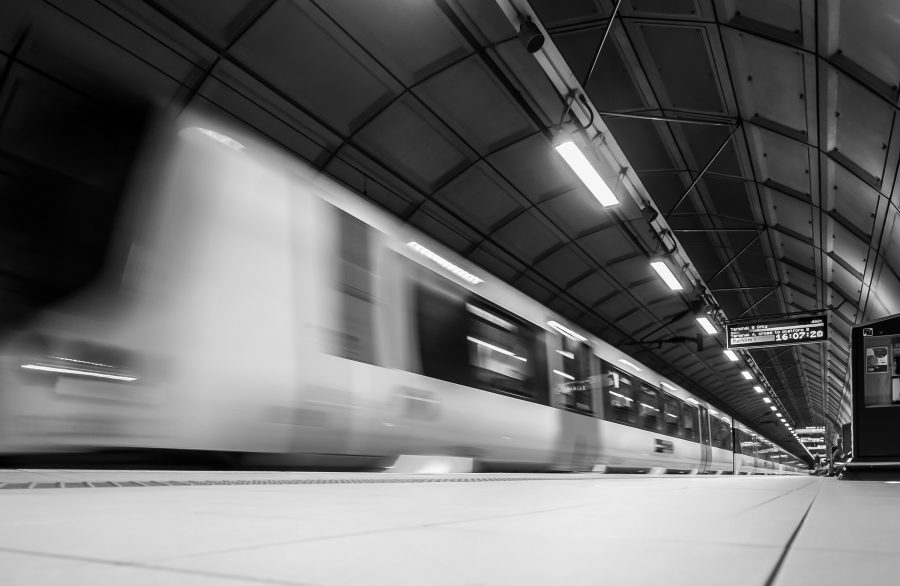Anyone under the age of 40 will have little experience of the nationalised British Rail and few people know which parts are now in private hands and which parts are either completely nationalised or are tightly controlled by the Department of Transport (DfT). British Rail was split into about 120 companies but with practically no true competition. Train Companies (TOCs) have highly defined areas of service, timetables are agreed with the DfT, the level of subsidy or surplus is agreed, and the results are set into 7-year franchise agreements granted by the DfT. This is good for the industry as there is now a guaranteed level of support and a contract to invest the money that the franchisee and government have promised. The industry can plan for major infrastructure projects such as Thameslink and numerous other schemes, but it is very far from being a truly privatised industry.
The industry is now encouraged to lease new trains bought by banks with the TOC leasing them over an extended period. British Rail was never allowed to lease vehicles as a way of improving its fleet as the Treasury maintained that the cost still lay on the National Debt. This concession has revolutionised the number of vehicles with 8000 new vehicles either on order or delivered. This would be a major problem if the industry was re-nationalised as foreign banks would not look kindly on being given British government Bonds in exchange for their nice new trains that cost them about £10 billion!
After a disastrous period in the private sector, Railtrack was brought back into national ownership in 2003 and, since being reorganised as Network Rail, has done extremely well in providing a safe railway. It also has a very successful commercial arm looking after the station portfolio. British Rail started to improve major stations in the 1980s spearheaded by ScotRail and Network SouthEast with London stations such as Liverpool Street, Cannon Street and Victoria all visually improved and provided with far more commercial space to help the finances of the industry. As usual, money was extremely limited, and it has been the privatised era that has found the cash for Network Rail to invest in further retail opportunities. There are many stations that are perfect for developers to propose schemes to Network Rail.
The biggest problem has been Network Rail agreeing to take on far more infrastructure work than it could successfully supply. This led to overspending and delays to trains whilst they squeezed engineering schemes into impossible timescales and budgets. When you have a production line exposed to passengers, stress points are very publicly exposed with the ultimate disaster being the 2018 timetable. Difficulties are currently being experienced by rolling stock engineers as they struggle to introduce radically different control gear on modern trains whilst the railway is still trying to run a traditional service.
Hopefully everything will settle down in 2020 and the public will receive a calmer and modernised train services but meanwhile, there is much anger amongst the public who are easy prey to the kneejerk idea of nationalisation as a solution. Re-introducing direct government control of the day to day running of the industry is not the answer to the technical problems presently being encountered.
All governments since 1994 have paid considerably more to support the industry than their predecessors ever gave to British Rail and in 2018/19 this has risen to £4 billion per annum in support of Network Rail to supply and improve the infrastructure. Conservative governments favour less taxpayer support whilst passengers pay a higher percentage in their fares. Labour has promised to reverse this and has also just promised to lower fares from January 2020 if they become the government. This latter proposal would cause chaos in the industry as it would cause a sudden unsustainable increase in passenger numbers in an industry already struggling to cope with demand and would starve the industry of vital income. Reduced revenue on the London Underground has been happening with the London Mayor’s Fare Freeze and is now having a disastrous effect on future investment for deep tube train renewal and signalling improvements.
Hopefully, readers will be noting that it is not ownership that matters, but it is the long term, steady and reliable funding that makes a successful railway. British Rail did incredibly well in running the most cost-effective railway in the world but only carried 750 million passengers a year before being instructed to price off any further demand. The privatised railway is carrying 1.8 billion passengers on a similar network with not many more carriages. This brings incredible strains whilst the industry responds to coping with the increased demand.
Nationalising would satisfy the railway unions and bring back inefficiencies in staffing such as reinstating thousands of guards on trains that are presently single-staffed, but it would do nothing to supply more funding or ease the difficulties in modernising the network whilst carrying out its daily duties. Railways in competition with the NHS, defence, policing and local authority spending will always lose out for investment – exactly what happened to British Rail.
A recent review of the railways has been completed and will recommend that franchises are superseded by managed concessions and there will be some form of overarching authority to take responsibility of running the railways taking away the day to day involvement and responsibility from the DfT and Secretary of State. Let’s stop there and keep the managers’ eyes on running the railway and introducing the very complicated new trains on to our crowded network. The last thing they need is the distraction of a massive re-organisation bringing the railways into 100% public ownership. (60% presently with Network Rail). Political dogma is not the answer to the railway’s problems. Steady investment and experienced management is what is needed to bring back the public’s appreciation.








